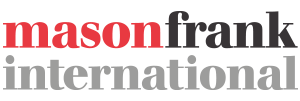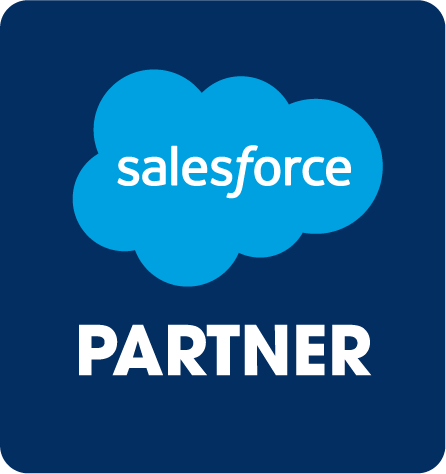
Implementing or upgrading Salesforce can be a huge project, but proper communication from the outset can ensure a smooth journey that services the needs of all departments involved.
Requirements gathering from an early stage is essential. Salesforce is such a diverse business product that it can vastly improve visibility on relevant data, as well as assist with reporting and process automation. Therefore you need to learn what Salesforce can do for you, and what you can do to ensure your HR department is optimized for Salesforce.
Depending on where you sit in your organization, you may have been consulted on the implementation or upgrading of your Salesforce CRM product, or you may have been informed after the decision has already been made. Either way, you need the opportunity to discuss the functionality of Salesforce with your technical team, so you can align your requirements with what Salesforce should eventually be able to offer you.
Ultimately, Salesforce is being introduced to optimize business processes, so it’s of great value to your organization if you make your requirements clear from the outset and align your goals with business goals.
Producing a statement of requirements
With any kind of software or business change project, relevant project managers and decision makers should be consulting all relevant parties from the outset, whether these are key stakeholders in the business or even end users that will eventually be expected to use the new product. This includes the HR department.
A statement of requirements will often be produced; a document outlining all the main requirements of the project from different areas of the business. It should include the following:
- A statement of key objectives for the project
- A description of each environment in which the system will be operating
- A succinct specification of requirements from each project stakeholder
An important thing to remember when producing a statement of requirements is that true business change takes time and requires a great deal of planning. While it may be taxing to conduct full requirements gathering before the project kicks off, this is an essential exercise that is worth dedicating time to.
Phoebe Aitken is a Senior Human Resource Specialist at Voices, the world’s largest source of voiceover talent. She details requirements gathering as a two-way exercise between her department and the technical team, where the priority is reaching a mutually beneficial Salesforce solution.
“We’ve implemented several new products and applications over the years, and we’ve been fortunate enough to regularly discuss our requirements, suggestions, and feedback with the rest of the business to ensure HR is getting the most out of Salesforce.
“Either we approach our technical team with our requirements and our Salesforce team subsequently goes out to find a relevant solution, or we’re informed of the possibility of implementing a new product and have the opportunity to explore how that could be beneficial to HR functions. Either way, communication from an early stage is imperative to ensure it benefits the whole business.
“One example of this happening is when we were receiving candidate applications through our website. We needed a more efficient way of gathering and tracking applications, so we mapped out how we wanted the recruitment funnel to look in Salesforce—all stages of the process, all requirements for different managers, and ultimately why making the change was important. Because our solution was built on the back of this requirements gathering, we now have a robust solution that meets our specification perfectly.”


Phoebe Aitken, Senior Human Resource Specialist at Voices
“We needed a more efficient way of gathering and tracking applications, so we mapped out how we wanted the recruitment funnel to look in Salesforce—all stages of the process, all requirements for different managers, and ultimately why making the change was important. Because our solution was built on the back of this requirements gathering, we now have a robust solution that meets our specification perfectly.”
How to assist with requirements gathering
While requirements gathering for a Salesforce project is likely the responsibility of someone other than yourself, there are ways you can assist with this to ensure you get your desired outcomes from the eventual product.
A popular way to measure requirements at this stage is to follow the principles of SMART. This means requirements should be:
Specific
Measurable
Agreed upon
Realistic
Time-based
Whether or not your project manager is assessing requirements in this way, this is a very logical way to set our your initial requirements before the consultation stage. Ultimately, Salesforce is a data platform, and so you need to think about how you can utilize better administration and reporting of data to reach your desired outcomes.
Specific
Think about what you perceive as the current shortcomings of the business. Is there an area in which you think processes could be streamlined, or is there business data you know exists but you currently don’t have visibility on? Always be specific to ensure your project manager appreciates your pain points and how the new system can alleviate them.
When outlining your requirements, it makes sense to contrast what you currently have with what you could have, either based on your own ideas or concepts you’ve seen or heard about elsewhere. Always relate your ideas back to how they will help your department and the wider business, ultimately increasing profits in the long term.
Measurable
It’s one thing to say ‘doing X will allow me to achieve Y’, but you need to be able to quantify that. How many working hours will automating a process allow you to dedicate to other tasks? How much does an alternative solution cost (i.e. how much will you save in the long run)? With your proposition, how much greater visibility will your business gain on X, and what is the knock-on effect of that? Quantify and measure everything.
Agreed upon
Your requirements must be mutually beneficial, meaning they are not so imposing or taxing on other areas of the business that they are deemed unreasonable. You may have to make your case for change, but set out requirements that will not be received negatively by other departments or your project manager, and they will likely be taken into account.
Realistic
Don’t base your requirements around things that aren’t feasible in your current situation. This is not about what you would have in an ideal world, but rather what you could have in your current situation if you weren’t limited by inferior software, inefficient businesses processes, or insufficient manpower.
For example, don’t base a requirement around a type of data you aren’t already gathering, rather focus on the things you already have and the ways you could better harness or utilize them using superior technology. If you can do brief research into the power of Salesforce and the possibilities it offers, your requirements will be even stronger.
Time-based
How long will the new process take to implement? How much time will be required to train staff in the new process? How sophisticated is your requirement from a technical perspective and how much will it slow the project down? Remember that you’re giving your requirements to a technical member of staff—it’s their job to get the project over the line, so keep the bottom line in mind when setting out your requirements.
Joshua Pines is co-founder and Director of Marketing at Sirenum, a workforce management system on Salesforce. He highlights requirements gathering from HR professionals as an essential part of the implementation process, given HR is a key stakeholder for Sirenum’s solution.
“Salesforce is highly configurable, so we spend a lot of time requirements gathering from clients to ensure the project is tailored around their needs. We find out exactly which areas of the business the client is looking to improve, and we do our own full business analysis, before offering relevant solutions.
“We tend to speak to operations and IT managers about the logistics of product implementation, before also meeting with project stakeholders (department heads) and end users (everyone from C-suite to floor worker who will be using the product).”


Joshua Pines, co-founder and Director of Marketing at Sirenum
“Salesforce is highly configurable, so we spend a lot of time requirements gathering from clients to ensure the project is tailored around their needs. We find out exactly which areas of the business the client is looking to improve, and we do our own full business analysis, before offering relevant solutions.”
Common Salesforce requirements for HR professionals
Part of outlining what you need from your new system comes down to knowing what Salesforce can offer to HR professionals. Some of the more popular functions on Salesforce for HR professionals include:
- Process automation: Salesforce can automate processes that HR professionals may be used to performing manually. This will save time and effort, and can be extremely useful for businesses in the long term.
- Intranet: As well as offering ingenious customer-facing solutions, Salesforce is just as useful for giving employees a single destination to manage all of their employment-related interests, such as payroll, benefits, and even time off.
- KPIs: Managing and visualising staff KPIs is a possibility Salesforce, and there are even dedicated Salesforce dashboards for HR professionals looking to do just this.
- Reporting: Salesforce isn’t just fantastic for administrating data, the reporting functions across Salesforce’s business suite make visualizing, distributing, and drawing conclusions from this data easier than ever.
Mistakes to avoid when setting out requirements
We can all be a little guilty of getting bogged down in our job role, but when outlining your requirements you need to remember that yours is not the only department in the business. Every major department in the organization will be setting out requirements and making their case for change, so try to avoid these common mistakes to ensure your requirements are heard loud and clear.
Asking for too much
Don’t think about how you could automate every single process if there’s no need to do so. Instead focus on where your shortcomings are currently and ensure your outlines requirements aim to correct these.
Not prioritizing requirements
After you’ve compiled your list of requirements, try applying the MoSCoW principle to prioritize them. Organize them in into ‘must have’, ‘should have’, ‘could have’, and ‘would have’, being fair about how essential these are to your own job role and to the wider business. One of the key measuring factors for any kind of business change is ROI, so be prepared to discuss any prioritized requirements in detail, particularly if they don’t yield a large ROI.
Not consulting the wider department
It’s one thing to outline your own requirements, but you run the risk of missing out on valuable insights if you don’t speak to colleagues about their pain points and perceived shortcomings. Doing so will also make it easier to get buy-in from those you have consulted, and drive eventual use of the technology after implementation.
Not giving context to your requirements
As an HR professional, you know how these requirements will help you achieve your desired outcomes, but don’t expect someone else to appreciate this. Always be prepared to explain concepts of your job role to non-experts, otherwise you run the risk of key project sponsors not appreciating your desired outcomes and subsequently overlooking your requirements.
Make no mistake, implementing or upgrading to a Salesforce product can be an arduous task, but making your requirements known and expressing them clearly from an early stage will ensure the HR department reaches all its desired outcomes.
Looking to learn more about requirements gathering in the context of the Salesforce development lifecycle? Read our guide to understanding your expectations as an HR professional during a Salesforce project.

